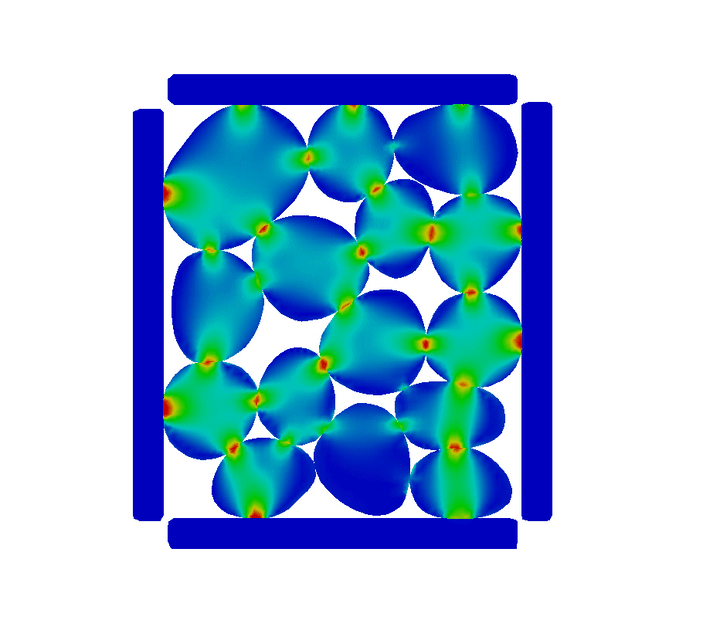|
One key drawback of classical discrete/distinct/granular element methods for particulate mechanics is that they cannot generate any kinetic and kinematics information at the sub-grain scales. Nevertheless, many dissipative mechanisms of granular materials are actually originated from path-dependent behaviors at the sub-grain scales where wear, damage, fracture and fragmentation occurs. This simplification therefore may lead to a departure of force chain topology and therefore make the resultant simulations inaccurate. Recovery of these sub-scale information while capturing the geometry and form of each individual grains is inherently a difficult task.
In this work, our postdoc Dr. Chuanqi Liu introduces an implicit material point method designed to bypass meshing of bodies by employing level set functions to represent boundaries at structured grids. This implicit function representation provides an elegant means to link an unbiased intermediate reference surface with the true boundaries by closest point projection as shown Leichner et al. 2019. We then enforce the contact constraints by a penalty method where the Coulomb friction law is implemented as an elastoplastic constitutive model such that a return mapping algorithm can be used to provide constitutive updates for both the stick and slip states. To evolve the geometry of the contacts properly, the Hamilton-Jacobi equation is solved incrementally such that the level set and material points are both updated according to the deformation field. To improve the accuracy and regularity of the numerical integration of the material point method, a moving least square method is used to project numerical values of the material points back to the standard locations for Gaussian-Legendre quadrature. Several benchmarks are used to verify the proposed model. Comparisons with discrete element simulations are made to analyze the importance of stress fields on predicting the macroscopic responses of granular assemblies. [manuscript]
0 Comments
Leave a Reply. |
Group NewsNews about Computational Poromechanics lab at Columbia University. Categories
All
Archives
July 2023
|


 RSS Feed
RSS Feed